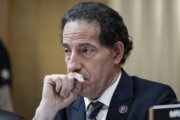Condom usage is down for everyone in the U.S., but researchers say the trend is especially stark among teens and young adults.
A few factors are at play: Medical advancements like long-term birth control options and drugs that prevent sexually transmitted infections; a fading fear of contracting HIV; and widely varying degrees of sex education in high schools.
Though this might not spell the end of condoms, public health experts are thinking about how to help younger generations have safe sex, be aware of their options – including condoms – and get regular STI tests.
“Old condom ads were meant to scare you, and all of us were scared for the longest time,” said Dr. Joseph Cherabie, medical director of the St. Louis HIV Prevention Training Center. “Now we’re trying to move away from that and focus more on what works for you.”
The Associated Press examined the factors behind the trend and how public health experts are responding. Here are key takeaways.
Medical advances change attitudes
As the fear of contracting HIV has declined, condoms are no longer a priority for men who have sex with men.
Now, there are many options to prevent HIV and other STIs, including pre-exposure prophylaxis (PrEP) and doxycycline post-exposure prophylaxis (doxy PEP), which can be taken within 72 hours after unprotected sex and can help prevent chlamydia, gonorrhea and syphilis.
The downward trend is evident among men who have sex with men on apps like Grindr, a popular gay dating app, which lists condom use under “kinks” instead of “health.”
Researcher Steven Goodreau believes the lack of use is trickling down to younger generations, and that the promotion of PrEP has overshadowed condoms as an STI prevention strategy. Two federal HIV strategies don’t mention condoms.
Andres Acosta Ardilla, who works at an Orlando-based clinic that cares for Latinos with HIV, said condom use among men who have sex with men is “pretty much a thing of the past.”
Similarly, options like intrauterine devices and birth control pills are gaining popularity among younger heterosexual women as methods of pregnancy prevention.
College-aged women say that young men discourage condom usage, and are often insulted by the implication that they might have an STI.
Controversy over sex ed
There are no federal standards for sex education, leaving it up to states to decide what is taught.
In some states, like Mississippi, condom demonstrations are banned. In others, like Oregon, students observe condom demonstrations as early as middle school.
Conservative groups and advocates believe that teaching abstinence until marriage should be the focus of sexual education, while other groups, like the Sexuality Information and Education Council for the United States (SIECUS), say comprehensive sex education prepares young people for healthy relationships.
“We would never send a soldier into war without training or the resources they need to keep themselves safe … so why is it OK for us to send young people off to college without the information that they need to protect themselves?” said Michelle Slaybaugh, policy and advocacy director for SIECUS.
___
The Associated Press Health and Science Department receives support from the Robert Wood Johnson Foundation. The AP is solely responsible for all content.
Copyright © 2024 The Associated Press. All rights reserved. This material may not be published, broadcast, written or redistributed.






